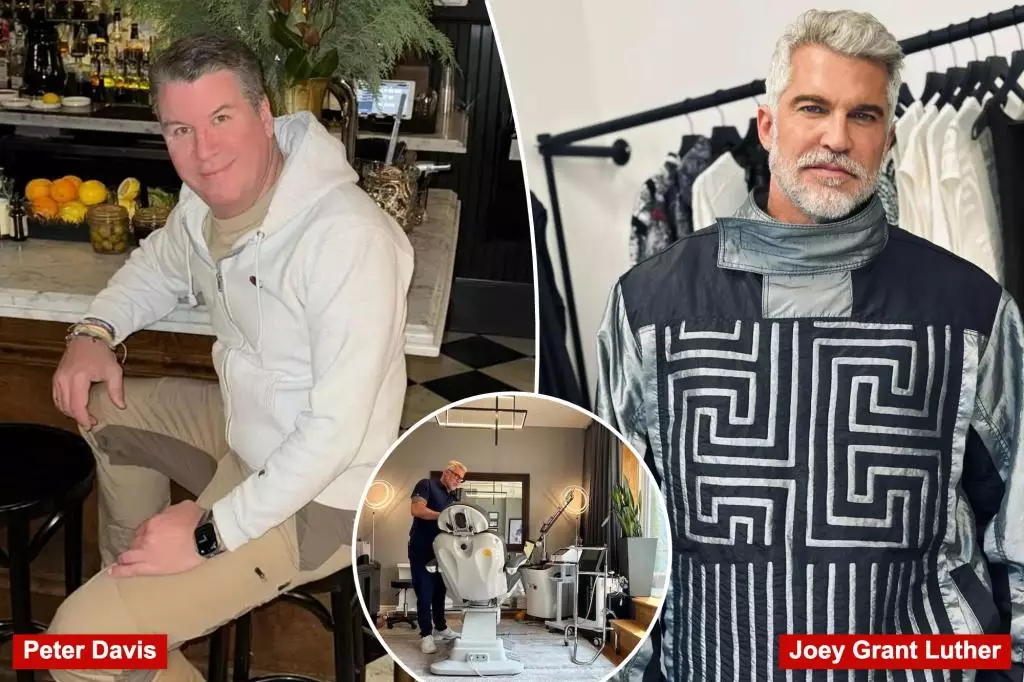In a shocking turn of events that has rippled through the social elite, the alleged malpractice of skin doctor Joey Grant Luther has unveiled a troubling narrative about the intersection of beauty, trust, and the shadowy underbelly of medical aesthetics. Known for his luxurious micro-dosage of Botox, Luther’s practice, JGL Aesthetics, was lauded among socialites until it was discovered that his offerings were tainted with counterfeit products from overseas. The scandal has prompted an urgent introspection among his clientele, as they grapple with the repercussions of having trusted a man who lacked valid medical credentials.
As former clients convene in a support group dubbed “Former Lutherans,” the nature of their concern reveals more than just the fallout from potential physical harm. The psychological toll of having placed their faith in a disqualified practitioner underscores a larger conversation about the risks associated with cosmetic procedures. The reality that medical aesthetics is a field rife with unregulated players has become painfully evident. Socialites are now questioning the integrity of those they once deemed trustworthy for beauty enhancements.
Peter Davis, the editor-in-chief of Avenue magazine and a former client, has publicly recounted his experience in a light-hearted yet chilling tone. With lines like, “It’s a miracle I still have a face!” he reflects an ironic detachment that masks a deeper anxiety. His revelation—that he was led to Luther through a friend’s recommendation inspired by aesthetics rather than medical credibility—illustrates a significant oversight within the community: a proclivity to prioritize image over authenticity.
Davis describes the atmosphere at Luther’s practice as deceptively luxurious, noting that the hidden realm of beauty treatments can often be cloistered in glamour. Patients were lured by lower costs and promises of results that mirrored the best in the industry, a dangerous combination that masked gaping holes in safety and professionalism. “We heard ‘good deal’ and we all ran,” he recounted, indicating that the first lesson may be to scrutinize seemingly convenient bargains. Luther, with his charming demeanor, managed to convince a clientele that charm equated to competence—an error now painfully evident.
As the legal wheels begin to turn, Luther has amassed serious charges, including wire fraud and unlawful administration of cosmetic procedures. Allegations have emerged detailing the severe consequences of his practice, with patients falling victim to adverse effects like botulism and other severe health issues. Once confined to the privileged circles of high society, the repercussions now extend far beyond individual relationships. A source cited the backlash within the gay community, historically a substantial portion of Luther’s clientele. The community grapples not just with the implications of potential physical harm but also with a crisis of confidence in safe practices.
In an interesting twist, reports indicate that Luther also offered dubious penis enlargement procedures—a claim that heightens the absurdity of the situation. This aspect introduces a rather unsettling dimension to the scandal; it raises questions about how far vanity can stretch and the measures individuals might take in pursuit of societal standards of masculinity and allure.
As the dust settles, the camaraderie found in groups like “Former Lutherans” serves as a reminder of the importance of collective support and shared experiences. In the face of betrayal, community resilience emerges as a vital resource. Clients are now banding together to share recommendations for legitimate professionals in their pursuits of aesthetic enhancements, signaling a shift towards cautious optimism.
The Joey Grant Luther saga acts as a cautionary tale, urging current and future consumers to critically assess the qualifications behind those administering treatments that bear potential risks. This scandal lays bare the naivety often accompanying a culture obsessed with appearance, shedding light on the underlying dangers of an unregulated industry. Ultimately, it calls for heightened transparency, stringent regulations, and a shift towards prioritizing safety and ethics over allure and affordability. The luxurious facade of medical aesthetics is now viewed through a clearer, albeit darker lens, pushing individuals to advocate for not just beauty, but genuine care in their journey toward self-improvement.

